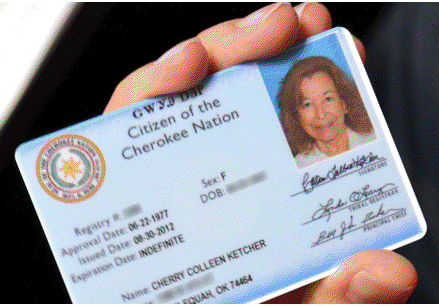Elizabeth Warren, the Democratic candidate for the U.S. Senate from Massachusetts, is in the hot seat. In a document she filed some years ago with Harvard, her employer, she said that she had some American Indian ancestry. Warren did not provide proof of tribal membership - such as "blood quantum" - but referred to family conversations. Scott Brown, her Republican opponent, said that Warren wasn't American Indian because she did not "look Indian."
Warren is the not the only American with Indian ancestry but without "papers." Brown is not the only white American to fall into the stereotype of Indians as having dark skin, high cheekbones, etc. Half of the four million American Indians come from mixed ancestry, and a number are as fair and light-skinned as Warren.
An overriding definition of membership in one of the 500-plus federally or state-recognized tribes has been "blood quantum," which whites imposed at the end of the nineteenth century. Just as they used "one drop" of African blood to define a person as "Negro," whites used the presence of Native blood for American Indian identity.
"Blood quantum" took hold with the Dawes Act of 1887, at the end of the Indian wars that had ignited the West. Also known as the General Allotment Act, the federal legislation broke up Indian lands and gave the pieces, in 160-acre allotments, to individual members of tribes. The federal government collected royalties from mining and other activities from these "trust lands" and distributed them to the Indian owners.
The Dawes Act also defined tribal membership as people who could document that one-half of their blood was pure Indian-"blood quantum." Dawes allotments were based on this principle. By 1900, the Indian homelands of 138 million acres had dwindled from half a continent to a land base about the size of Minnesota. In more than 400 treaties, Indians had "exchanged" their lands for a federal guarantee of health care, education and other benefits. Tribal membership based on "blood quantum" determined who received those benefits.
With the Dawes Act, tribal members began to carry a "white card" - a Certificate of Degree of Indian Blood; Indians are the only Americans who carry such identity cards-"papers." For many Indians, diluting the tribal "blood" by marriage outside the tribe, especially to non-Indians, endangers their very identities. But tribal membership today is fluid. Some tribes still use blood quantum, but the amount varies from half to less than that. Others do not use "blood quantum," relying on cultural tests, such as fluency with native languages, or community connections. Finally, some individual Indians refuse to participate in the "blood quantum" definition, because of its racial underpinnings.
In disputes, some tribes have disenrolled members for various reasons. The results are devastating for those individuals and not just because they lose the benefits. Disenrollment is equivalent to exile. As Harlan McKosato, a Sac and Fox and high-profile national journalist said on National Public Radio, "For a native American, your tribe is your heritage, your culture, your identity, and often provides the foundation for your political and religious beliefs."
Using race to define a person has been pernicious, because it keeps us from getting past race. Blood quantum, is a bitter legacy of conquest and colonialism, and Elizabeth Warren has been caught up in it.
